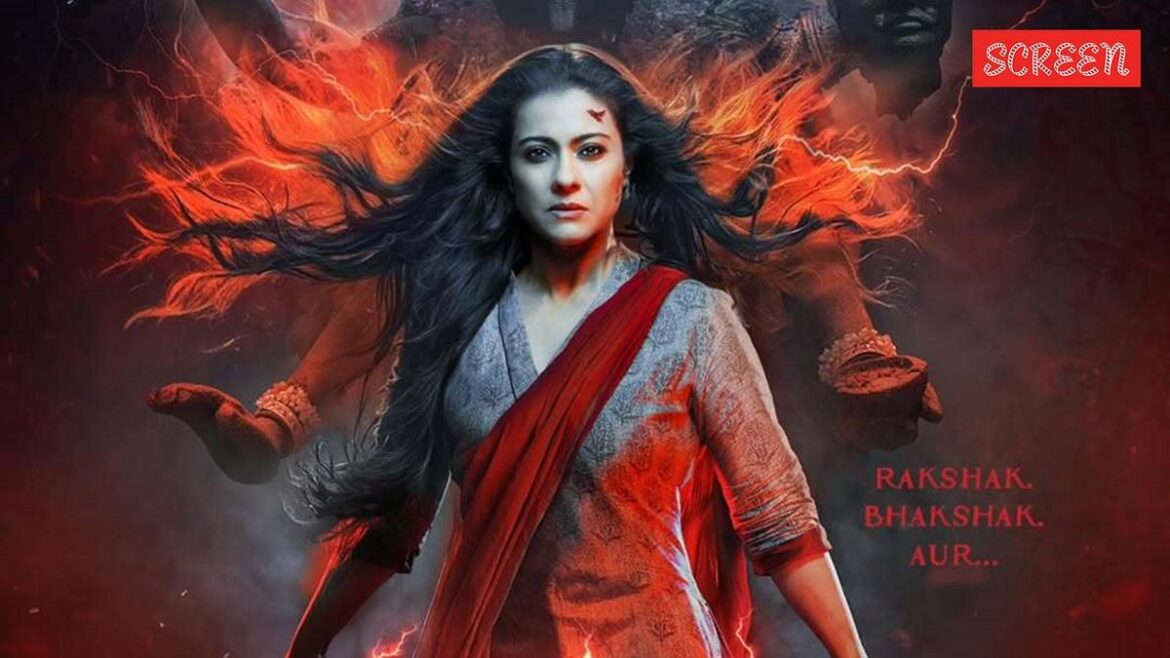What Happened in Chandrapur
In ‘Maa’, Bollywood icon Kajol returns to the screen as Ambika, a fierce mother determined to protect her daughter from ancient supernatural forces. Directed by Vishal Furia, the film blends mythology with modern-day anxieties, diving headlong into issues like patriarchy, menstruation stigma, and familial secrets. But while its themes are ambitious, the execution stumbles, leaving the horror flick torn between powerful intentions and clumsy storytelling.
Setting the Scene
The story begins in present-day Bengal. Ambika (Kajol) and her husband Shuvankar (Indraneil Sengupta) have managed to shield their 12-year-old daughter Shweta (Kherin Sharma) from the darkness buried deep within the family’s past. But curiosity knows no boundaries. A tragic incident prompts the mother-daughter duo to travel to their ancestral haveli in Chandrapur—a place frozen in time and heavy with secrets.
Upon arrival, they are greeted by Joydev, played by Ronit Roy, who has long served as caretaker of the estate. But behind the traditional welcome and eerie tranquility, something festers. The mute family retainer, portrayed convincingly by Dibyendu Bhattacharya, seems to be nursing a truth too dark to voice. From there, the story lurches into myth and terror.
The Myth and the Message
‘Maa’ pitches its horror on two fronts: the literal demonic threat in the form of the mythical Raktbeej, and the systemic oppression of women, specifically revolving around themes of misogyny and menstruation. Ambika’s character slowly morphs into a symbolic Kali-avatar, setting up a final confrontation between good and evil, between modern femininity and archaic patriarchy.
The village’s fear-drenched atmosphere, the dense forest with rotting secrets, and the vivid celebration of Kali Puja provide texture to the story. The production design, rich with saturated hues and haunting visuals, gives the film a stylistic edge. “Smashing patriarchy is a task that films need to keep taking up, and Kajol has the heft to get the job done,” the review notes—and that’s where the film really tries to punch above its weight.
Government’s Reaction
There hasn’t been an official statement from cultural watchdogs or authorities, but the film’s bold inclusion of taboo topics like menstruation has already started conversations on social media. Questions about how mythology can be framed in modern narratives and what responsibilities filmmakers hold when representing religious themes are bubbling in the public sphere.
Flawed Execution Undermines Strong Themes
For all its worthy intentions, ‘Maa’ struggles with coherence. The first half meanders, more occupied with mood than momentum. That might have worked in a psychological horror, but here it only dilutes the buildup. Just when you think the narrative is gathering steam, it shifts into a muddled second half where CGI takes over and logic dissolves.
The film relies heavily on tropes: haunted mansions, mythical curses, flashback reveals, and ritualistic terror. Yet, none of it feels particularly fresh. The CGI, while frequent, lacks impact. It’s serviceable at best, generic at worst—never amplifying the terror or awe that the story seems to aim for.
Memorable Moments, Missed Opportunities
- The candid chat between mother and daughter about periods – a rare, important moment.
- The chilling flashback sequences – hinting at a better horror film buried in the script.
- Kajol commanding the screen even when the screenplay doesn’t fully support her.
- The spiritual clash of Kali vs. Raktbeej – powerful in concept, tepid in delivery.
The thematic elements—especially around how society treats women’s bodies and choices—are much stronger than the storytelling itself. And because the narrative loses grip, the emotional payoff never lands as hard as it should.
Performances Carry the Weight
Kajol shoulders the story with gusto. Her Ambika is initially restrained, but as the danger mounts, so does her emotional intensity. Whether she’s rebuking her daughter or confronting centuries of evil, she remains persuasive. Ronit Roy provides a grounded presence, acting as a bridge between past and present. Indraneil Sengupta and Dibyendu Bhattacharya play their parts subtly, keeping the focus on the mother-daughter core.
Kherin Sharma, as Shweta, delivers a balanced performance—equal parts vulnerable and spirited. Yet, even the strongest performances can’t fully resurrect the film from its structural flaws.
Final Verdict: Courageous But Clunky
‘Maa’ is a film that dares. It takes on patriarchy, religious conservatism, and unspoken norms with a straightforwardness rarely seen in commercial Hindi horror. It discusses menstruation like it’s no big deal. Because it shouldn’t be. And it allows a mainstream actress like Kajol to channel divine rage in a way that’s cinematically compelling—at least in theory.
But the lack of tight writing, a clear narrative arc, and creative visual effects keeps ‘Maa’ from becoming the film it could have been. It’s trying to do many things at once—be a mythological thriller, an emotional drama, a feminist statement. That ambition isn’t the problem. The lack of control is.
Still, maybe ambition counts for something. Maybe next time, with cleaner focus and tighter direction, such stories can do more than just resonate—they can haunt.
‘Maa’ premiered on [streaming platform or theater name not provided], and is currently rated at 2 stars.

